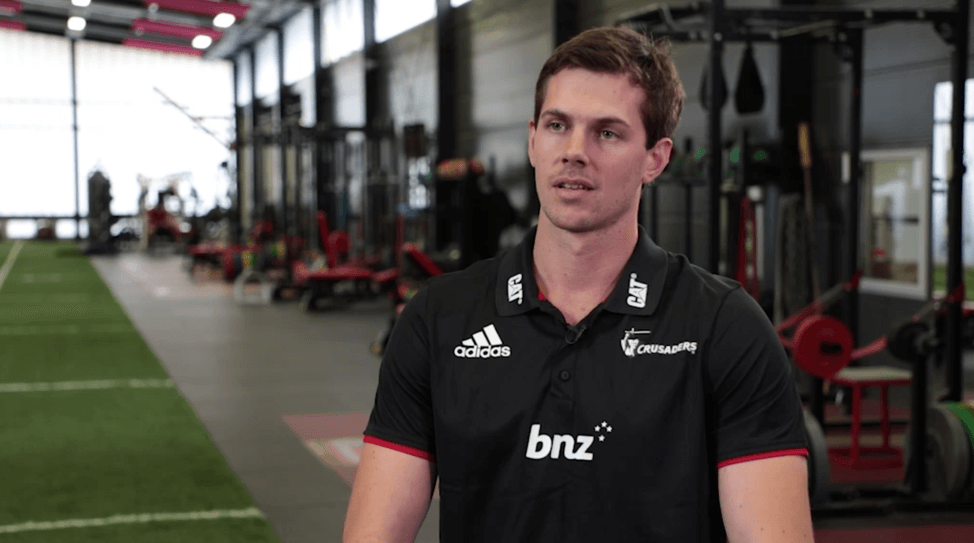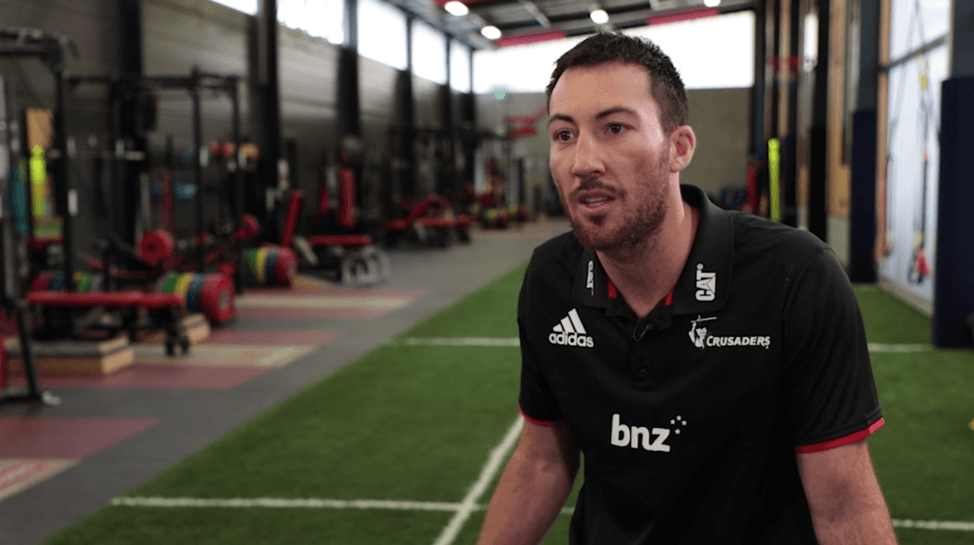Inside the Crusaders: Using Catapult to manage individual and team loads
2017 Super Rugby champions, the BNZ Crusaders, have been using Catapult for the past six seasons and have full buy-in from academy prospects right through to the club CEO.
Sports Scientist, Shaun Owen, and Head of Strength & Conditioning, Simon Thomas, share their insights into how they manage individual and team workloads using objective data.
Shaun Owen (Sports Scientist)

When looking at Catapult there are obviously a lot of metrics you can use, but we try to pull it down to the bare necessities. If we had to pull it down to one key metric, it would be what we call volume running. This is anything over 7km/hour, or 2m/s roughly, and that gives us an indication between active recovery and work, and just a total picture of how much work they’re doing, while cutting out that recovery period.
So we’ll plan our loading generally in weekly chunks, and we’ll normally use an acute:chronic stress balance ratio. Whatever you want to call it, it gives us what we need to tell which guys we need to load higher and which guys we need to pull back.
In terms of preparedness to play, we’ve got longitudinal data where we take our position-specific targets and we know that every Monday and Tuesday we try to hit these targets. We generally try to get per position and individual loads specific to their game and to themselves. We’ll try to hit two of those – the two game loads being a Saturday and Tuesday. And we know that if their average capacity is up where we need it to be, they should be prepared to play.
If we didn’t have Catapult, this would all be a bit harder. Generally what we find is that when we plan a training session, 60% of the guys will be where we want them to be, then you’ll always have about 20 on either side – some are overcooked and some are undercooked.
We have Catapult on every player, which is 47 units out there at any given moment, and each of those guys have a pre-planned target and if they get too close to it we’re able to pull back, or if they’re underdone by a particular session we can always top them up afterwards.
Catapult has had a massive impact with our injury reduction rates. What we try to do is develop resilience and robustness in terms of running and running loads that they’ll need to endure that are position-specific during the games.
By using Catapult and being able to properly periodise our athletes, we’ve had a 50% reduction in injuries over the last two years. Obviously this is a multivariate approach where a lot of things go into it, but a big portion of it we like to give to our load management.
Catapult has been crucial when returning athletes to play. It allows us to get an objective marker and we know their pre-existing standards of where we need them to get. We have certain benchmarks, and once they get to these and tick the right boxes, we know that we can re-integrate them into play, and they’ll have a less likely chance of getting re-injured.
As a sports scientist, technology improves my job massively. There are a lot of things I’m not able to measure subjectively, although there is a place for that, but objective measurement of something like running or PlayerLoad is something that is crucial to the sport and makes a big impact.
When we’re on the field we have live feedback on the side and what we do is give individual targets to each player, and we can see these coming through on the big screen. They’re prepped, they know what their targets are, they can come to the side of the field and check what it is, and if they haven’t hit their targets they will go out and self-drive running to try to achieve them.
Having Catapult to help manage the transition of athletes is a massive point for us, where we have players going through the levels of academy, into Mitre 10, into Super Rugby, up to All Blacks, and back – they’re obviously in different environments and experiencing different loads. What Catapult does is allow us to get an objective mark on what they’re doing in these different loads, or these different environments, and when they do come back into ours we can transition them smoothly without any spikes.
Simon Thomas (Head of Strength & Conditioning)

We’ve been with Catapult for a number of years now and we have absolutely no reason to change. It’s a system that caters to our needs and we get great support when we want to build something into it that helps us improve what we’re doing. And also just getting end-user help when we need it to help things fit for our needs and purposes.
We were fortunate to get some great success last year on the field, and the system was definitely a big part of that for us. Managing travel loads is a big part of Super Rugby, where you have to go across multiple time zones and travel some fair distances so to make sure we nail the early part of our week on arrival is really big for us, so to make sure we can monitor that, manage, and get those parts right. And the back-end of the week is all about intensity, no matter where we are. So for us to be able to hit those targets and know that we’re hitting those targets to prepare to be at our best on Saturday is the biggest point behind what we do to perform.
The information we get from Catapult goes across a number of different departments, and it’s sort of the piece that binds us all together. We’re all working off the same information. So we present information to our coaches around our training loads, and training data, to make sure not only do we get better as the season goes on in terms of our conditioning, but we hit specific targets related to match intensity in some trainings, and re-loading some players earlier in the week if we need to.
One of the great things for us is that we can align the system with our match analysis system and look at specific periods of play in a game and really drill down into what the demands of those periods are. And a critical thing for us is being able to train for worst case scenarios, so when they appear in games, it’s normal and we’re ready to go for them.
One of the challenges we face is having a number of All Blacks, but it’s also a blessing because we do have some great players. And that’s something we obviously want to continue developing through our system and it shows we’re able to grow those players. When they do transition between the two environments, we need to know what they’ve been doing when they haven’t been here, and how we manage their transition back into our environment to get them to where we need them to be when they’re with us. So Catapult helps us get that right, make sure they hit the right targets when they’re training with us, to transition them back into performance as quick as possible.
When we’re using Catapult to measure our training loads, the biggest figure I like to work with and check every day is total running distance. That’s the bread and butter of our program, to make sure we build a team across a full campaign and we don’t de-condition through the final months of the competition. Outside that, we need to make sure we sprint once every week with our players so they’re ready to go if the game asks them to do so.
The way that we use the system on different days of the week is to make sure we build our intensity through to the back-end of the week to perform. For example, early in the week it’s all about getting as much running as the week will allow us to do, and we build a real decent bank and base behind us, and the back-end of the week is all about intensity, so we want to get above match intensity in our Thursday session, for example, to make sure we’re ready for the intensity that the game will bring on the Saturday.
Want to discover more about the technologies Crusaders are using to manage their athletes? Click here to find out more.